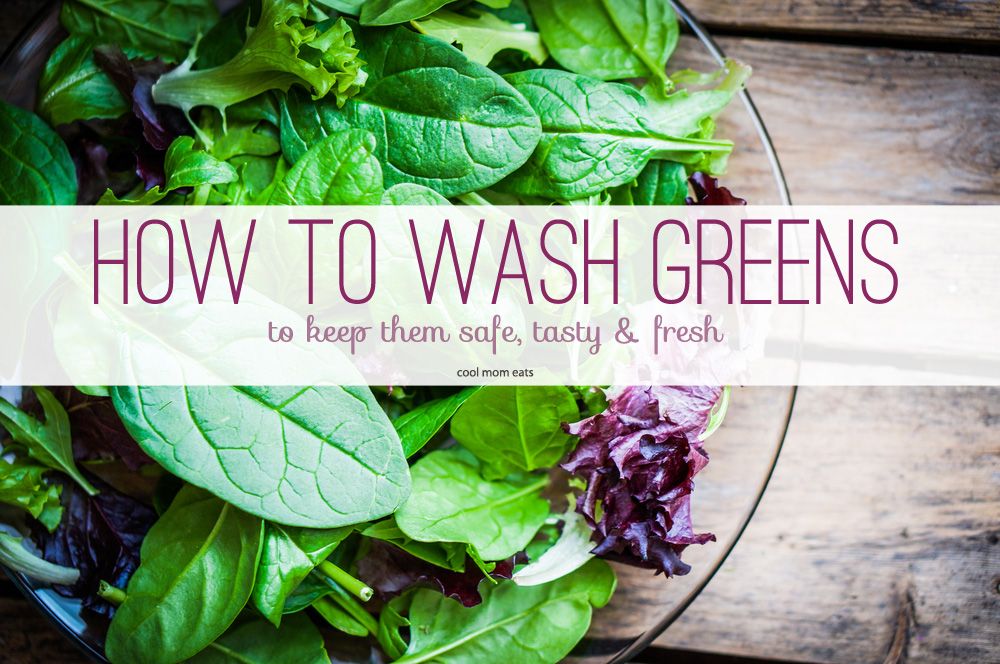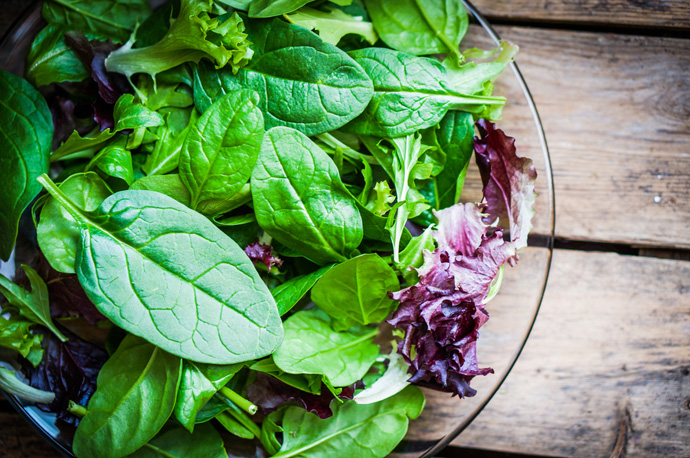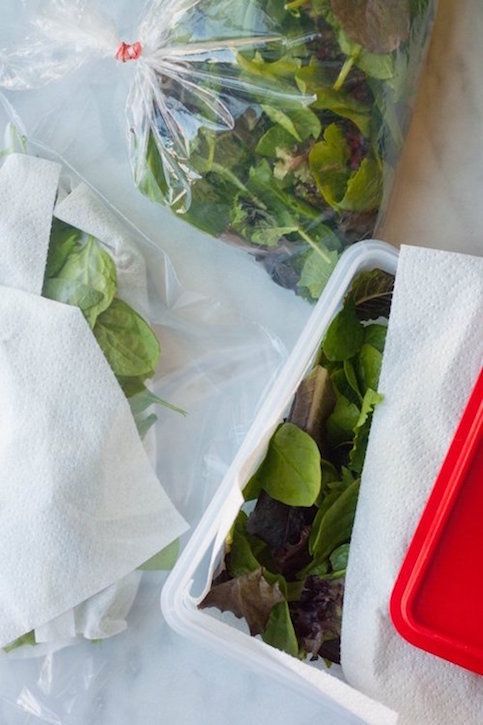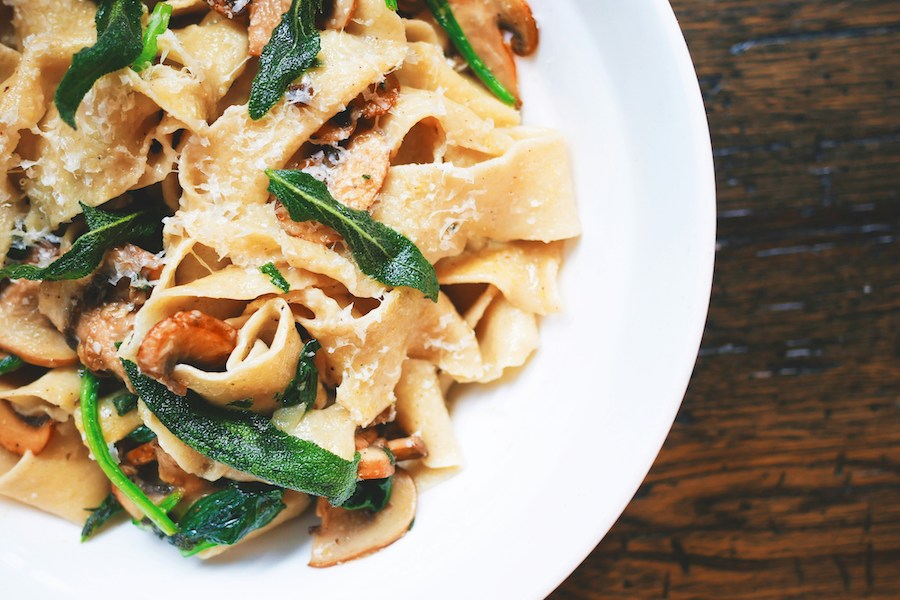No matter what I’ve read or been told, there is a part of me that wonders, “Do I really have to wash a few lettuce leaves for my sandwich?” or “Can my kids actually get sick if I give them that non-organic lettuce straight from the package!?” Because let’s be honest: Mama’s not exactly triple washing those greens when rushing to get a quick weeknight dinner on the table.
Ninety-five percent of the time, I do wash my greens, because I think it must make some difference—but how much of a difference? And how do I wash them best? For how long? With so many questions, I decided to dig deeper on the dangers (or not) lurking in my lettuce, and the best way to wash greens to keep them safe, tasty, and fresh.
Related: How to wash berries so that they stay fresh longer. Way longer.
How to wash greens: Here’s what I found

1. Lettuce is particularly susceptible to bacteria. There is a lot of harmless bacteria out there, but because leafy greens are grown in soil, they are exposed to some of the bad kind too, like E. Coli. Not a lovely image, but nothing motivates washing like the thought of poop. So, yes, washing your greens is neccessary, each and every time.
2. Organic doesn’t mean you don’t need to wash. Buying organic may mean you’re safe from synthetic pesticides, but not from harmful bacteria in the soil. So keep washing.
3. Pre-washed packaged greens are actually clean. Pre-washed packaged greens are the exception. They are probably cleaner than any greens you wash yourself since the process of “trip washing” is a serious one that’s highly regulated. In fact, if you open the package and go to wash them even more (because you know you’ve wondered if you should), you may actually contaminate the greens. So take advantage of those pre-washed greens. Seriously. And if you’re feeling unsure about a specific brand, check out the FAQ section on the company’s website or give them a call to ask questions.
4. Water works best. An article at NPR shared findings from studies by America’s Test Kitchen and Tennessee State University, which found that cleaning agents and veggie washes are not necessary and that “water can remove 98 percent of bacteria when it’s used to rinse and soak produce.” Awesome. Another score for the busy parent.
Related: How to serve spinach to kids. Yes, even picky ones.
How to wash greens: The best method
Washing and Storing Lettuces | The Kitchn
1. Trim: Cut your lettuce, or break apart the leaves before washing. There’s no point in washing the dirty stem if you’re going to throw it out anyway.
2. Soak or rinse: Place lettuce leaves in a large bowl of water where they aren’t too crowded. Swish the lettuce around a bit and, after soaking for about a minute, the dirt and sand will fall to the bottom of the bowl. Gently shake the soaked leaves to remove excess water and set them on a towel or in a salad spinner to dry. If the greens are straight from the farmer’s market or are extra dirty, repeat this process, switching out the water each time, until the greens are clean.
If you are just using a couple of lettuce leaves at a time, rinsing them under a faucet is fine. Just make sure to rinse thoroughly under a fully running faucet. The force of the water will wash away bacteria.
3. Dry: If you are washing your greens ahead of time, don’t forget the importance of drying them. As our friends at the Kitchn advise, drying is just as important as cleaning. Moisture can lead to more rapid decay of lettuce and nobody wants slimy greens. I’m also a fan of their method of storing lettuce in between dry paper towels in a sealed bag or container, since I find that it really does extend freshness.







